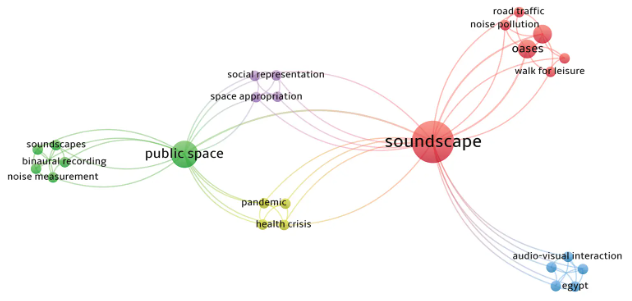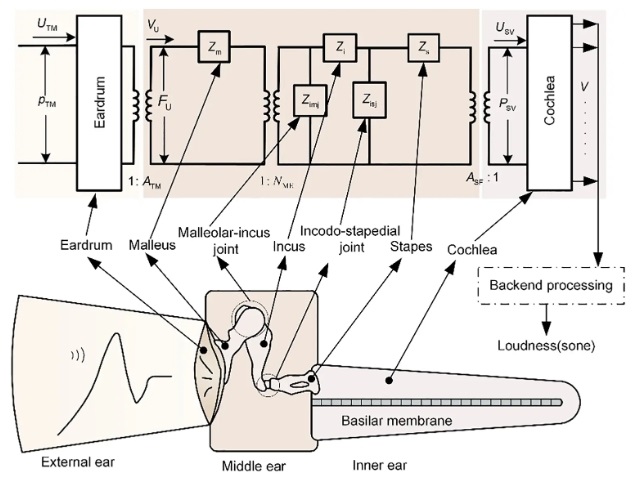Analysis of characteristics of ground motion and typical bridge performance in the Baoshan earthquake
Abstract
A Ms5.2 earthquake occurred in Longyang District, Baoshan City, Yunnan Province on 2 May 2023. The earthquake caused some degree of damage to power facilities and roads. Since then, small and medium sized earthquakes have occurred frequently in this region. In order to better analyze the characteristics of ground motion in this area and the coping strategies of related bridges, the response spectra, omnidirectional response spectra and omnidirectional representations of other indexes of intensity measure from records of strong ground motion were analyzed using the seismic records recorded by stations near the epicenter. Four typical bridges near the epicenter were selected for modeling and seismic response analysis to derive their damages under the action of ground motion, and structural displacements of the bridges with the strong ground motion were compared to analyze directional linkages. The Incremental Dynamic Analysis (IDA) method was used to analyze the fragility of the four bridges, and the seismic capacity of different bridges under the ground motion was compared. The omnidirectional displacement response spectra of the two stations and the omnidirectional representations of other indexes of intensity measure have obvious directionality, and the predominant direction is perpendicular to the direction of the fault, reflecting the rupture directionality of the earthquake. Comparing the corresponding period of the structural displacement response with seismic action with the omnidirectional displacement response spectra, it was found that the bridge structural displacement is correlated with the predominant cycle and predominant direction of the omnidirectional displacement response spectra. Under the same seismic action, the maximum moment of the deck arch bridge in the transverse direction is larger than that in the bridge direction; the larger the span of the deck arch bridge, the larger the maximum moment at the arch footing. According to the analysis of fragility, it can be seen that the seismic capacity of the continuous rigid frame bridge is much lower than that of the deck steel truss arch bridge under this ground motion. Compared to the deck-type concrete arch bridge, the deck steel truss arch bridge has greater seismic capacity. In this paper, based on the structural analysis and fragility analysis of these four bridges close to the fault, the structural damage and damage levels in the future earthquake are speculated, which provide suggestions for the follow-up maintenance and reinforcement work, and are also conducive to the resilience evaluation and rapid repair work after the real earthquake damage.
References
[1]China Earthquake Networks Center (2023). Ms5.2 earthquake in Longyang District, Baoshan City, Yunnan Province. https://news.ceic.ac.cn/CC20230502232722.html.
[2]Wang, D., Guo, X., Sun, Z., Meng, Q., Yu, D., et al. (2009). Damage to highway bridges during Wenchuan earthquake. Journal of Earthquake Engineering and Engineering Vibration,29 (03), 84-94.
[3]Bao, M. (2010). Seismic response of simply-supported girder bridge subjected to near-fault pulse-like ground motion. (Master Thesis). Institute of Technology, Harbin.
[4]Hu, J., Xie, L. (2011). Directivity in the basic parameters of the near-field acceleration ground motions during the Wenchuan earthquake. Chinese Journal of Geophysics,54(10), 2581-2589.
[5]Li, S., Wang, J., Yan, X., Feng, Y. (2016) Influence of spatial distribution characteristics of near-fault ground motions on seismic responses of cable stayed bridges China Civil Engineering Journal,49(06), 94-104.
[6]Zhang, F., Li, S., Yan, X., Wang, J. (2017) Effects of near-fault pulse-type ground motions on the seismic responses of a long span cable stayed bridge. Journal of Vibration and Shock, (36)21, 163-172+184.
[7]Xie, J., LI, X., Wen, Z., Zhou, B. (2018) Variations of near-fault strong ground motion with directions during the 2013 Lushan Ms7.0 earthquake. Chinese Journal of Geophysics,61(04), 1266-1280
[8]An, Z., Xie, J., Li, X., Wen, Z. (2019) Directivity effects on strong ground motion from the February 6,2018 Mw6.4 Hualien earthquake. Chinese Journal of Geophysics,62(12), 4658-4672.
[9]Sun, M., Sun, B., Hou, G., Fan, F. (2020) Study on the main direction of ground motion and its effect on the dynamic response of structure. Chinese Journal of Geophysics,53(S2), 150-155.
[10]Zhao, X., Wen, Z., Xie, J., Xie, Q., Liu, Y. (2021) Ground motion directionality in the 2018 Taiwan Hualien Mw 6.4 earthquake. Journal of Vibration and Shock,40(10), 235-243.
[11]Li, G. (2023) Analysis of Vulnerability of Continuous girder bridges under Near Fault Ground Motion (Master Thesis). Institute of Engineering Mechanics, China Earthquake Administration, Harbin.
[12]Inoue, K., Saitoh, K., Umeyama, Y., Igarashi, K., Ikeda, T. (2020) Evaluation of directionality considering periodic characteristics for strong motion observation records. Journal of Japan Society of Civil Engineers, Ser.A1(Structural Engineering & Earthquake Engineering (SE/EE)),76(4), I_205-I_213.
[13]Huang, Y., Xie, Y., Tian, L., Wu, Y. (2023) Earthquake damage and enlightenment from traffic system in 2023 turkey Ms7.8 earthquake. World Earthquake Engineering, 39(03), 1-15.
[14]Muho, V E., Kalapodis, A N., Beskos, E D. (2024) Multi-modal and multi-level structure-specific spectral intensity measures for seismic evaluation of reinforced concrete frames. Bulletin of Earthquake Engineering, 1-35.
[15]Kulariya, M., Saha K S. (2024) Efficient intensity measures for vulnerability assessment of reinforced concrete buildings under flow-type and slow to moderately moving landslides. Structures,69107267-107267.
[16]Huang, Y., Song, G., Li, G., Zu, L., Li, H., et al. (2022) Numerical Simulation of Performance of Arch Bridge during the 2021 Yangbi Earthquake. 2022 7th International Conference on Smart Grid and Electrical Automation,476-481.Lanzhou
[17]Xue, H. (2021) Seismic vulnerability analysis of continuous rigid frame bridge based on IDA method (Master Thesis). Kunming University of Science and Technology, Kunming.
[18]Xie, K. (2017). Seismic analysis and evaluation method of concrete filled steel tube arch bridge. Beijing: China Architecture & Building Press.
[19]Magliulo, G., Maddaloni, G., Petrone, C. (2014) Influence of earthquake direction on the seismic response of irregular plan RC frame buildings. Earthquake Engineering and Engineering Vibration,13(2), 243-256.
[20]Bradley, A B., Baker, W J. (2015) Ground motion directionality in the 2010-2011 Canterbury earthquakes. Earthquake Engineering & Structural Dynamics,44(3), 371-384.
[21]Jeon, J., Choi, E., Noh, M. (2017) Fragility characteristics of skewed concrete bridges accounting for ground motion directionality. Structural Engineering and Mechanics,63(5), 647-657.
[22]Yan, L., Cao, L., Yang, K. (2019) Seismic Fragility Analysis of Self-anchored Suspension Bridge Based on Incremental Dynamic Analysis. Journal of Chongqing Jiaotong University (Natural Science),38(11),41-45
[23]Long, J., Ning, X., Shu, Y., Zhou, Y. (2023) Seismic vulnerability analysis of continuous girder bridge based on IDA method. Journal of Guizhou University (Natural Science),40(04), 108-117.
[24]Zhang, H (2024) Seismic Vulnerability Analysis of Urban Interchange Ramp Bridges Based on IDA Approach (Master Thesis). Shijiazhuang Tiedao University, Shijiazhuang.
Copyright (c) 2024 Yong Huang, Liang Tian, Yachen Xie, Yuexiang Wu

This work is licensed under a Creative Commons Attribution 4.0 International License.









